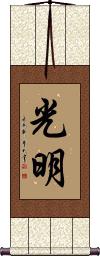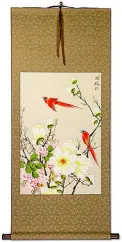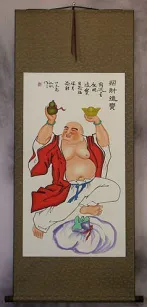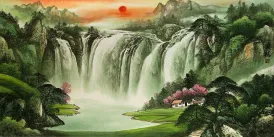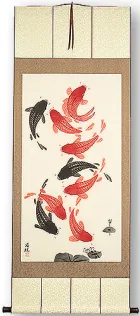Many custom options...
And formats...

Light Bright and Promising Future in Chinese / Japanese...
Buy a Light Bright and Promising Future calligraphy wall scroll here!
Personalize your custom “Light Bright and Promising Future” project by clicking the button next to your favorite “Light Bright and Promising Future” title below...
Light / Bright and Promising Future
光明 is a nice way to say “light” in Chinese and old Korean Hanja.
This is because the word also suggests a bright future or refers to someone who is very promising (great future potential).
The first character means light or bright.
The second character means bright and clear (in this context).
This word appears in most Japanese dictionaries, but it is not the most common Japanese Kanji word for light (more commonly used for the name Mitsuharu).
In old Korean Hanja, this can also mean brightness or brilliance.
In the context of Buddhism, this means “Light emanating from a Buddha or Bodhisattva, symbolizing their wisdom and compassion.”
Bright and Promising Future
明るい未来 is a Japanese proverb that means “Bright Future.”
It suggests a lot of possibilities and potential awaits in your future. A great gift for a graduate.
The first part of this proverb literally means bright or light. The second part means the future but can also be translated as “the world to come.”
Note: Because this selection contains some special Japanese Hiragana characters, it should be written by a Japanese calligrapher.
This in-stock artwork might be what you are looking for, and ships right away...
Gallery Price: $126.00
Your Price: $69.88
Gallery Price: $126.00
Your Price: $69.88
Gallery Price: $72.00
Your Price: $39.88
Gallery Price: $220.00
Your Price: $138.88
Gallery Price: $120.00
Your Price: $79.88
Gallery Price: $300.00
Your Price: $128.88
Not the results for Light Bright and Promising Future that you were looking for?
Below are some entries from our dictionary that may match your Light Bright and Promising Future search...
| Characters If shown, 2nd row is Simp. Chinese |
Pronunciation Romanization |
Simple Dictionary Definition |
Variations: |
akarui あかるい |
(adjective) (1) light; well-lit; well-lighted; (adjective) (2) bright (of a colour); brightly-coloured; brightly-colored; (adjective) (3) cheerful; bright; spirited; sunny (e.g. disposition); (adjective) (4) encouraging (for the future of a project, etc.); promising; of fair prospects; (adjective) (5) (as 〜に明るい) familiar (with); knowledgeable (about); well versed (in); (adjective) (6) fair (e.g. politics); clean; impartial |
Variations: |
akarui あかるい |
(adjective) (1) light; bright; well-lit; well-lighted; (adjective) (2) bright (colour); (adjective) (3) cheerful; bright; spirited; sunny (e.g. disposition); (adjective) (4) bright (future, prospects, etc.); rosy; encouraging; promising; (adjective) (5) (as ...に明るい) knowledgeable (about); familiar (with); well versed (in); well acquainted (with); (adjective) (6) fair (e.g. politics); clean; impartial |
The following table may be helpful for those studying Chinese or Japanese...
| Title | Characters | Romaji (Romanized Japanese) | Various forms of Romanized Chinese | |
| Light Bright and Promising Future | 光明 | kou mei / mitsu haru koumei / mitsuharu ko mei / mitsu haru | guāng míng guang1 ming2 guang ming guangming | kuang ming kuangming |
| Bright and Promising Future | 明るい未来 | akarui mirai akaruimirai | ||
Successful Chinese Character and Japanese Kanji calligraphy searches within the last few hours...
